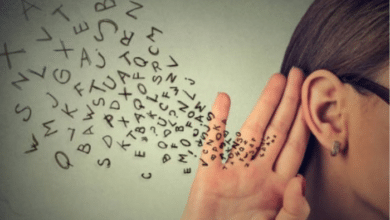Quadratics: A Comprehensive Guide

Quadratic equations are a fundamental concept in algebra that students encounter early in their mathematical journey. Understanding quadratics is crucial as they form the basis for more advanced topics in mathematics and are widely applicable in various fields. This guide will delve into the essential aspects of quadratics, including their definitions, solutions, and real-world applications.
What is a Quadratic Equation?
A quadratic equation is a second-degree polynomial equation in the form of ax2+bx+c=0ax^2 + bx + c = \text{0}, where aa, bb, and cc are constants, and a≠0a \neq 0. Understanding what a quadratic equation is helps in identifying and solving such equations in algebra and other mathematical contexts.
The Standard Form of Quadratic Equations
The standard form of a quadratic equation is ax2+bx+c=0ax^2 + bx + c = 0. This form is crucial for applying various solution methods, such as factoring, completing the square, and using the quadratic formula. Recognizing the standard form simplifies the process of working with quadratic equations.
Solving Quadratic Equations by Factoring
One of the primary methods to solve quadratic equations is by factoring. This involves expressing the quadratic equation as a product of two binomials. Understanding how to factorize quadratics allows for finding the roots or solutions of the equation effectively.
Using the Quadratic Formula
The quadratic formula, x=−b±b2−4ac2ax = \frac{{-b \pm \sqrt{{b^2 – 4ac}}}}{2a}, provides a straightforward way to solve any quadratic equation. By substituting the values of aa, bb, and cc from the quadratic equation, you can find the roots. The quadratic formula is an essential tool for solving quadratic equations, especially when factoring is not feasible.
Completing the Square
Completing the square is another method for solving quadratic equations. This technique involves rearranging the equation to form a perfect square trinomial, making it easier to solve. Understanding how to complete the square provides an alternative approach to solving quadratics.
The Role of the Discriminant
The discriminant of a quadratic equation, given by b2−4acb^2 – 4ac, indicates the nature of the roots. If the discriminant is positive, the quadratic has two real and distinct roots; if zero, it has one real and repeated root; and if negative, it has two complex roots. Knowing the role of the discriminant helps predict the type of solutions a quadratic equation will have.
Graphing Quadratic Equations
Graphing quadratic equations involves plotting the quadratic function y=ax2+bx+cy = ax^2 + bx + c. The graph of a quadratic function is a parabola that opens upwards if a>0a > 0 and downwards if a<0a < 0. Understanding how to graph quadratics is essential for visualizing their properties and solutions.
Real-Life Applications of Quadratics
Quadratic equations are not just theoretical; they have numerous real-life applications. They are used in physics for projectile motion, in economics for profit maximization, and in engineering for designing parabolic structures. Recognizing the applications of quadratics demonstrates their importance beyond the classroom.
Quadratic Inequalities
Quadratic inequalities involve expressions like ax2+bx+c<0ax^2 + bx + c < 0 or ax2+bx+c>0ax^2 + bx + c > 0. Solving these inequalities requires understanding the solutions of the corresponding quadratic equation and determining the intervals where the inequality holds true. Learning about quadratic inequalities broadens the scope of solving quadratic-related problems.
Tips for Mastering Quadratics
Mastering quadratics involves practice and familiarity with various methods of solving them. Tips for mastering quadratics include practicing different solution methods, understanding the significance of the discriminant, and applying quadratics to real-life problems. Consistent practice and application help solidify the understanding of quadratic equations.
Conclusion
Quadratics form a cornerstone of algebra and are essential for advancing in mathematics. By understanding what quadratic equations are, how to solve them using various methods, and recognizing their real-life applications, students can build a strong mathematical foundation. Mastery of quadratics opens the door to more complex topics and practical problem-solving skills.
FAQ
Q1: What is a quadratic equation?
A1: A quadratic equation is a second-degree polynomial equation in the form ax2+bx+c=0ax^2 + bx + c = 0, where aa, bb, and cc are constants, and a≠0a \neq 0.
Q2: How do you solve a quadratic equation by factoring?
A2: To solve a quadratic equation by factoring, express the equation as a product of two binomials set to zero, then solve for the values of xx that satisfy each binomial equation.
Q3: What is the quadratic formula?
A3: The quadratic formula is x=−b±b2−4ac2ax = \frac{{-b \pm \sqrt{{b^2 – 4ac}}}}{2a}. It provides the solutions to any quadratic equation by substituting the values of aa, bb, and cc.
Q4: What does the discriminant tell you about a quadratic equation?
A4: The discriminant b2−4acb^2 – 4ac indicates the nature of the roots. A positive discriminant means two real and distinct roots, zero means one real repeated root, and a negative discriminant means two complex roots.
Q5: How are quadratics used in real life?
A5: Quadratics are used in various fields such as physics for projectile motion, economics for profit maximization, and engineering for designing parabolic structures. They are essential for modeling and solving real-world problems.





